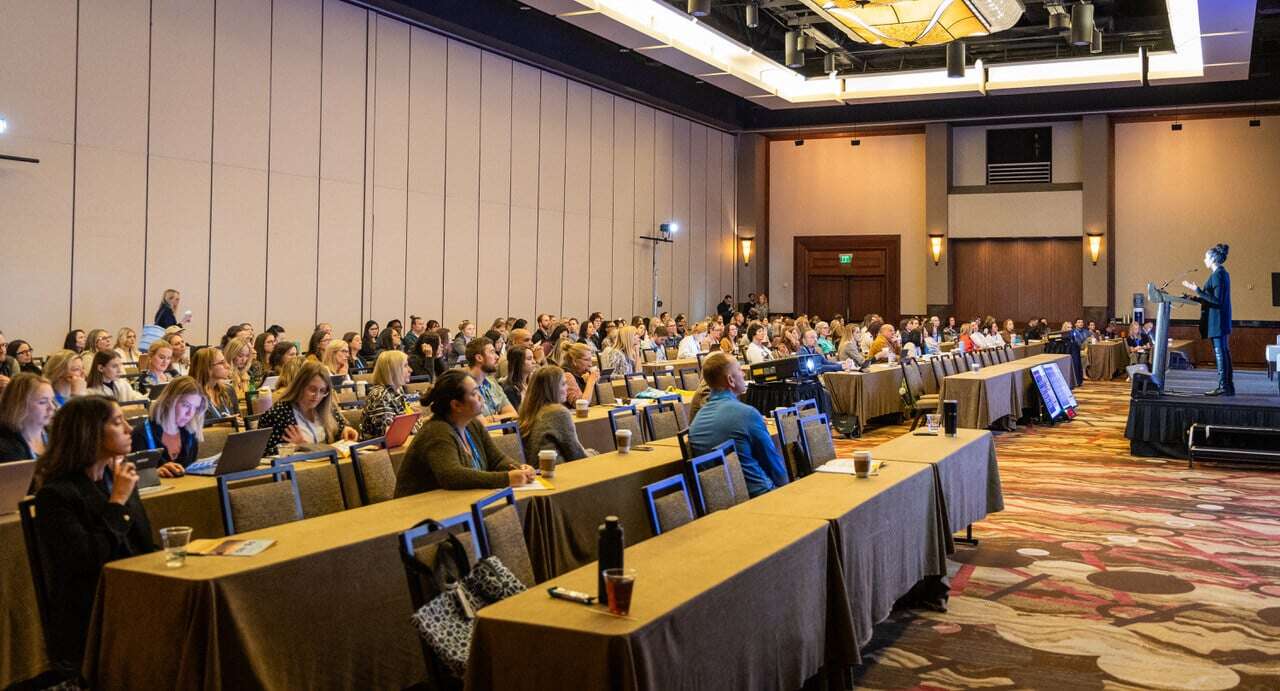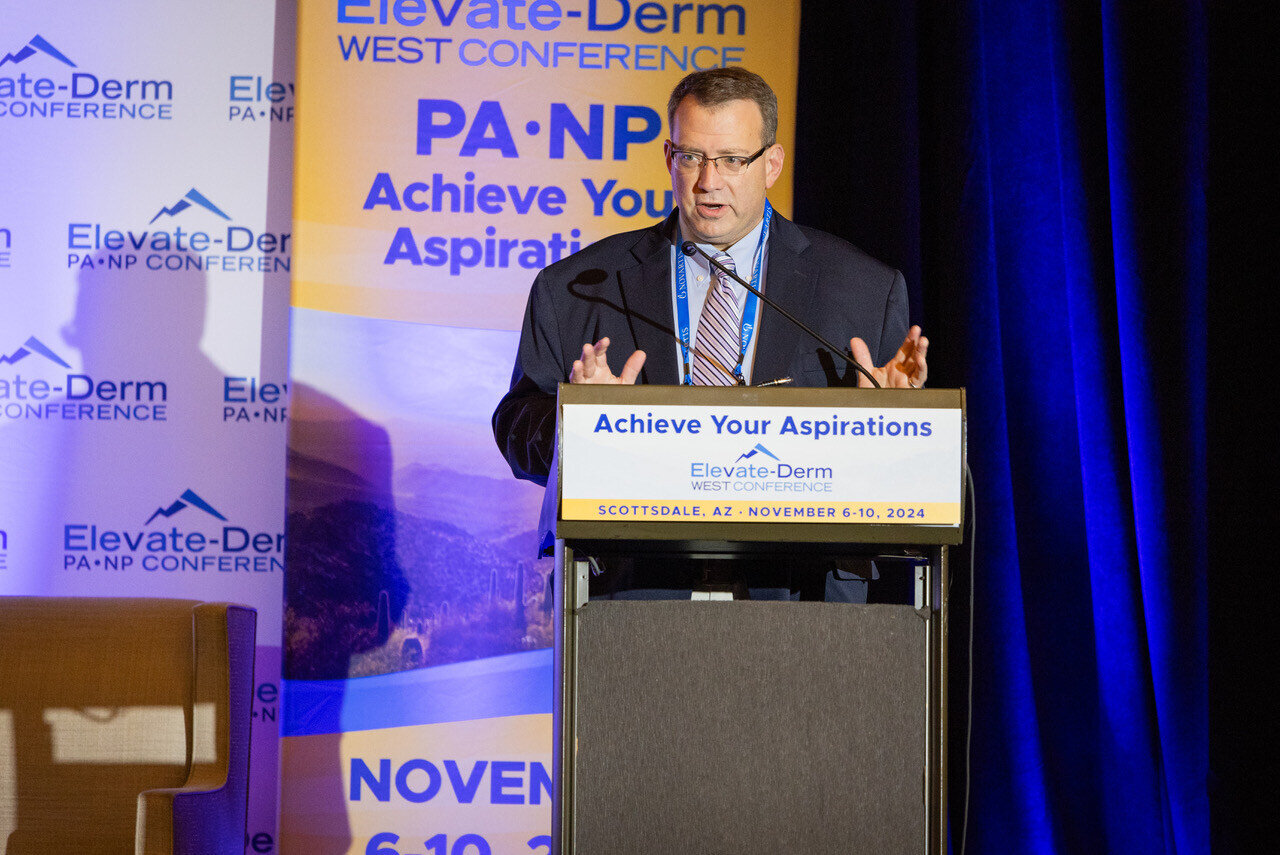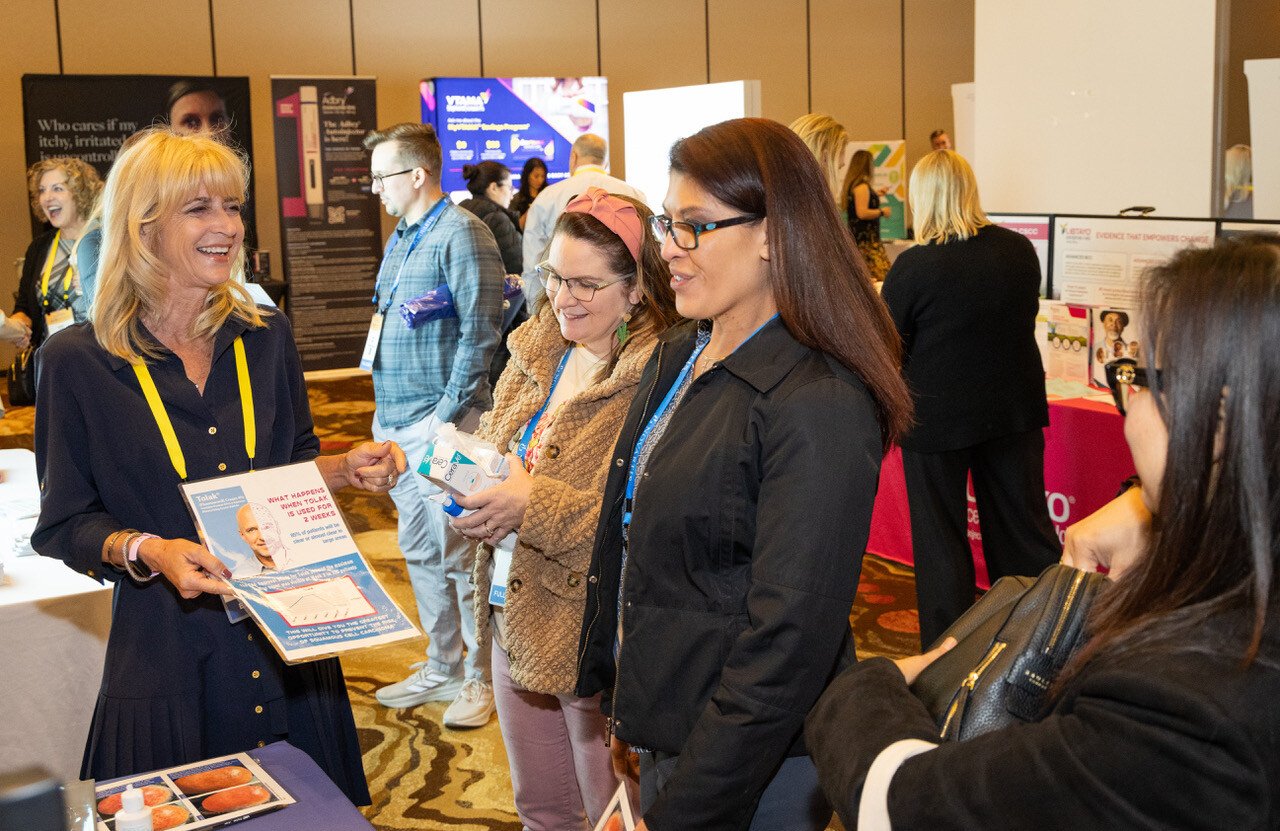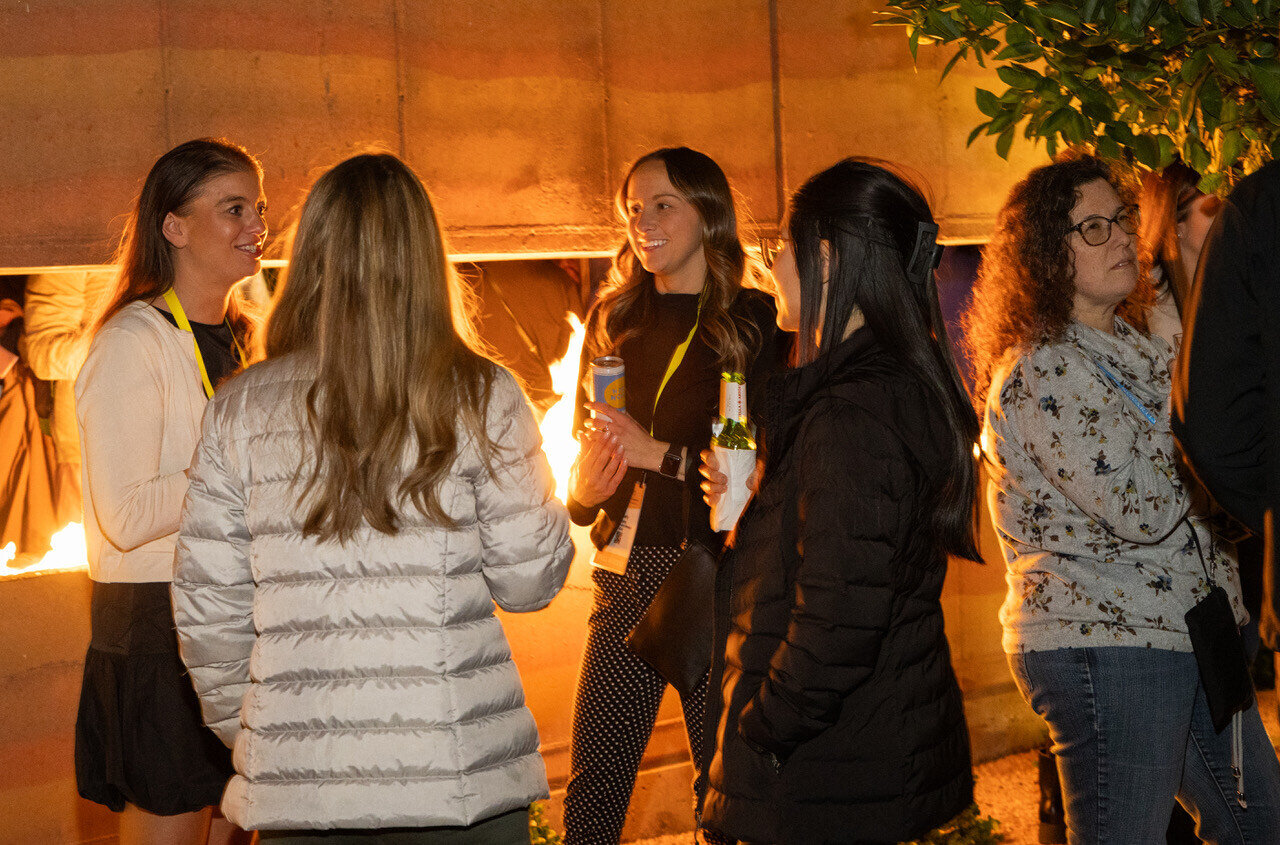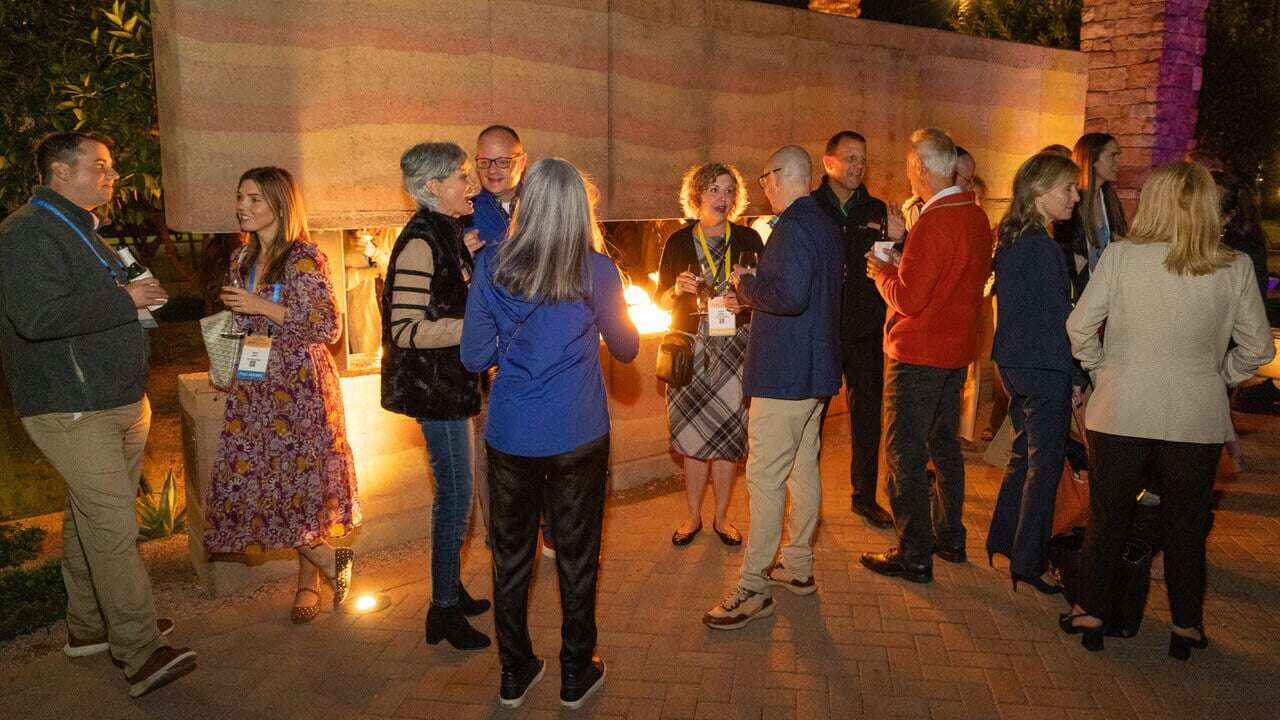2024 Elevate-Derm West Day 1
Elevate West Conference 2024 Day 1
First day of the Elevate Derm West Conference at the Westin Kierland Resort in Scottsdale, Arizona started with a sunrise group yoga session, and lectures were kicked off with Dr. Whitney High from the University of Colorado discussing Pearls and Pitfalls for Dermatology APPs. Clinical insights from his first lecture include making sure biopsies are of good quality and representative of the process you are sampling by assuring the depth is appropriate for accurate diagnosis of the suspected disease. He also provided a pearl for biopsying suspected bullous pemphigoid: shaving an entire, intact blister makes for an easier diagnosis for the dermatopathologist. After a break for breakfast, attendees settled in to hear Dr. Maya Thosani, an expert in cutaneous oncology, discuss the latest in non-melanoma skin cancer. Tips from her lecture included pointers about eruptive keratoacanthomas and suggesting alternative approaches for their management besides excision because of koebnerization risk. Instead, consider treatment with oral retinoids, intralesional treatment (5-Fluorouracil, methotrexate, or bleomycin), photodynamic therapy, or topical immunomodulator/chemotherapy creams. Dr. High then rejoined her and Elevate-Derm Alliance leader , Veronica Richardson, PA-C, on the stage to cover challenging non-melanoma skin cancer management. The panel discussed common side effects of hedgehog inhibitors including dysgusia, alopecia, muscle spasms, and fatigue. They also agreed upon a three-biopsy approach to a definitive diagnosis of CTCL. Dr. High and Veronica were then joined by Dr. Mark Gimbel of MD Anderson Cancer Center to round out the morning discussing pigmented lesions. Their discussion mentioned several tips around genetic testing and histopathology for suspected melanoma including the loss of P16 expression in a melanoma lesion, which is associated with a poorer prognosis.
After the lunch break, Dr. Mark Gimbel returned to the main stage for a deep dive into updates on melanoma. One of the clinical insights from this lecture is that AJCC staging is the gold standard prognostic tool for melanoma as it provides guidelines for treatment. Then, Dr. High and Veronica joined him again, and the trio delivered cases on subungual tumors where the audience picked up pearls about the most common causes of melanonychia such as subungual hemorrhage, matrix nevus, trauma, lentigo, racial variants, and melanoma. Later in the afternoon, Dr. Jennifer Hsaio, who runs a specialty clinic for HS, gave her lectures on diet in HS and the diagnosis and management of HS. From her experience, she recommends considering supplementation of the following micronutrients: zinc, vitamin D, and vitamin B12 based on current evidence. She also recommends using a 4-8 mm punch for an incision and drainage (without packing) as a good treatment option for draining abscesses associated with hidradenitis suppurative. The afternoon lectures also included a delivery from Eileen Cheever, PA-C, a founding Elevate-Derm Alliance leader, lending her expertise about AI in Dermatology. She spoke about how an artificial intelligence system uses wide-field images to assist clinicians in detecting suspicious pigmented lesions or “ugly ducklings.” She also reviewed the conference posters, highlighting the use of a new scale, PDCA-Derm, as a tool for detecting and assessing post-inflammatory skin discoloration and dyschromia. Another poster conveyed the results of a phase 3 study of delgocitinib cream, which was applied twice daily for 16 weeks and showed improvements in the Dermatology Life Quality Index (DLQI) in patients with moderate to severe hand eczema.
In the evening, attendees were enticed to the welcome event for networking where the theme was the Desert Bloom Bash. Mingling, music, cocktails, and heavy hors d’oeuvres were enjoyed between conference goers and faculty before retiring for the evening to prepare for a full day of lectures on Friday.
